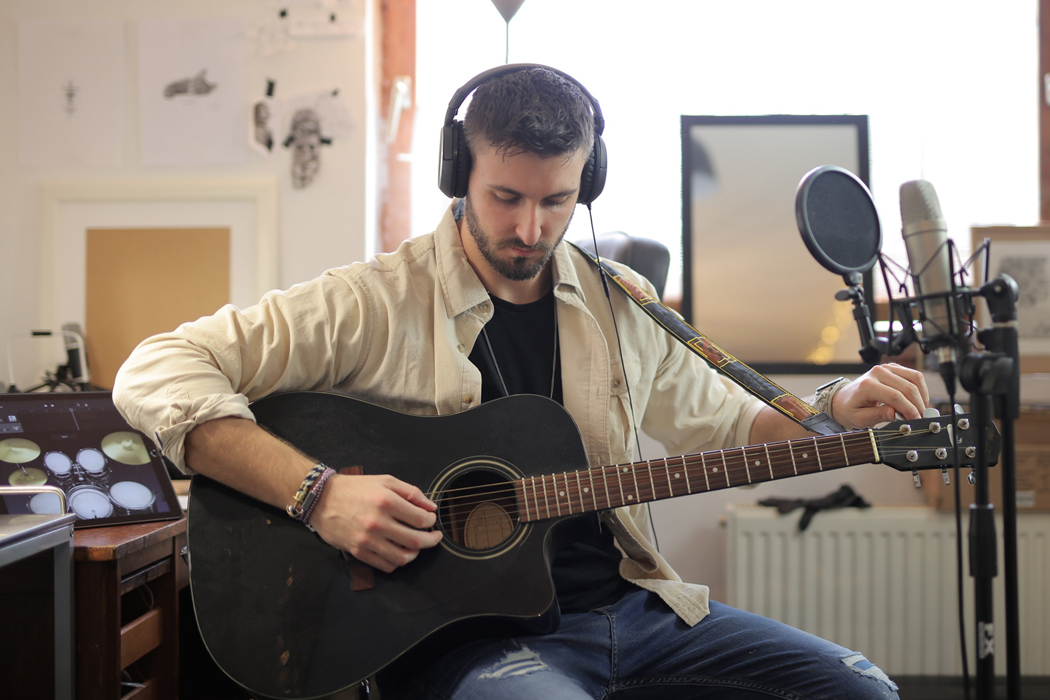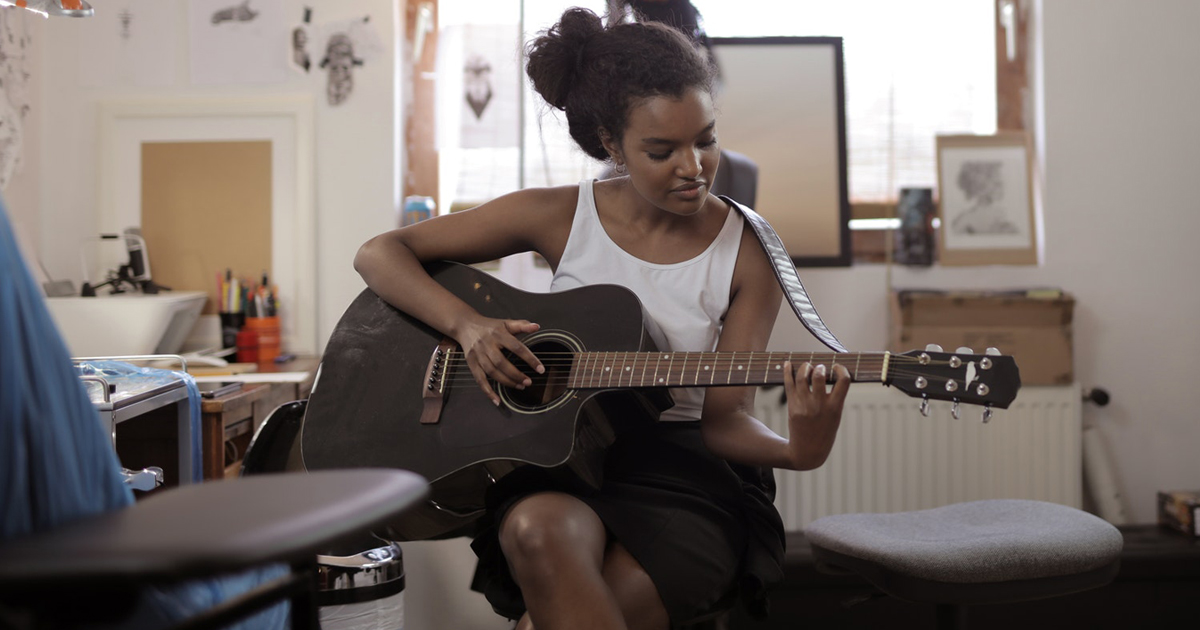
+ Welcome to Soundfly! We help curious musicians meet their goals with creative online courses. Whatever you want to learn, whenever you need to learn it. Subscribe now to start learning on the ’Fly.
One of my favorite Emily King albums is her acoustic record, Sides. For people who are fans of the soulful, R&B-inspired, singer-songwriter, this album simply feels brand new.
And it’s because she did it right. There’s more than one way to do it right, for sure, but believe it or not, there is also a wrong way to create acoustic versions of your songs. To help you avoid doing it the wrong way, here are some reasons why acoustic versions of your electronic songs are rad, and how you can keep them rad.
1. It’s a New Angle for Fans to Enjoy
Acoustic versions are awesome because they show your fans a completely new angle on the songs they already love. This is the most obvious reason to turn your electronic songs acoustic. It’s almost as if you’re sharing a new song with fans.
For example, Muse has a song called “Dig Down” that’s on their album Simulation Theory. And it sounds like what you’d expect from this band: pulsing synths, a rebellious-sounding chord progression, and a contagious beat.
But they also released an acoustic version of the song. And it’s a completely different song. It features acoustic guitar, piano, claps, and even a soulful gospel choir. Both versions stand on their own, even though they’re the same song.
2. It’s Not that Much Extra Work for You
Recording and releasing an acoustic version of your electronic song isn’t like releasing a brand new song. It doesn’t have to be a ton of extra work. You’re not starting from scratch. You already have a chord progression, song structures in place, a tempo and rhythmic structure you like, and possibly even some sampled parts from the original you can use and repurpose.
Try this: record your acoustic instrument (usually acoustic guitar or piano) along with the original version. Then mute everything but that instrument and the vocals, then start recording new parts or adding in parts from the original.
Not only is it less work than creating a new song, but it’s also super fun to repurpose your song, and imagine a whole new way of presenting it.
+ Learn production, composition, songwriting, theory, arranging, mixing, and more — whenever you want and wherever you are. Subscribe for unlimited access!
3. It’s a Perfect In-Between Projects Project
Because acoustic versions don’t have to be a ton of extra work — like writing and workshopping new material, fleshing out full songs with instruments and sound design, etc. — you can finish an acoustic album way quicker than an album from scratch. This means an acoustic album can be a good project to work on if you know there will be a lot of time between your other projects.
Maybe you want to focus on quality for your next album; so you want to give yourself time to write and record the songs. That’s when you can put together an acoustic EP or album. You’re able to give fans something fun and valuable while keeping your name out there.
4. You Can Reach a Whole New Audience
If you’re primarily an electronic artist, you have the chance to reach a whole new audience. By releasing acoustic versions of your songs, you can attract new folk/indie/singer-songwriter fans out there. These people might then become fans of your musical catalogue in general.
And even if they don’t, they can still enjoy your acoustic renditions. Why not tap that audience if you have a shot?
5. Tips for Making Acoustic Versions of Your Songs
Okay, so those are the whys of creating acoustic versions of your electronic songs, now let’s talk about the hows. Here are some tips for producing acoustic versions:
- Set the song aside for a while. Don’t listen to it. Give your brain and ears a break from it. Then come back to it and play it as if you were someone else trying to learn your own song.
- Don’t just play the song on an acoustic guitar. This means don’t play the song the same way you did on the record but on an acoustic instrument. Yes, you can start with the original song as a template, but you have to make it unique. Don’t just re-play it, reinvent it.
- Try using more open chords. Better yet, play the song with an open tuning on your guitar.
- Use maj7, m6, diminished, and augmented chords to give it a jazzier, more interesting feel.
- Slow it down.
- Change the rhythm.
- Try different strumming patterns.
- See if you can change the time signature without messing up the lyrical phrasing.
- Change the key. It can sound very different as your voice will be in a new register.
Here’s the main takeaway — why not turn your electronic songs acoustic? If it’s no good, just don’t release it yet. But you’ve at least got to try it.
Want to get all of Soundfly’s premium online courses for a low monthly cost?
Subscribe to get unlimited access to all of our course content, an invitation to join our members-only Slack community forum, exclusive perks from partner brands, and massive discounts on personalized mentor sessions for guided learning. Learn what you want, whenever you want, with total freedom.





